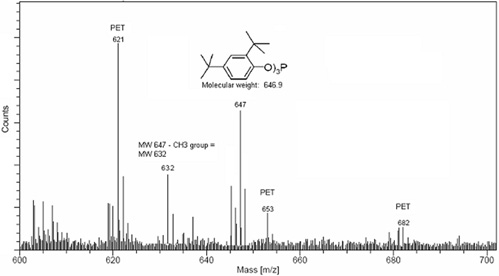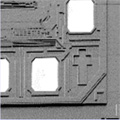Time-of-flight secondary ion mass spectrometry (TOF-SIMS) analyzes mass fragments of elements and molecules dislodged from the surface by an ion beam. This technique is often selected because it is very surface sensitive (~15Å) and can detect organic molecule fragments to the ppm level. TOF-SIMS can detect hydrogen and lithium and is definitive for the presence of silicone.
Because of its good sensitivity to many species, the spectra obtained from TOF-SIMS can be difficult to interpret. Although similar surfaces can be compared, TOF-SIMS should not be considered quantitative unless careful standards are available. The technique gets its name because a time-of-flight mass analyzer is used in the technology. TOF-SIMS is not considered a destructive technique.
TOF-SIMS Capabilities Include
- 15Å analysis depth
- 2000Å spatial resolution
- Molecular identification of organic molecule fragments
- Detection to ppm level for most elements and surface species
- SIMS maps to show lateral distribution of surface species
- Depth profiling
Material issues analyzed with TOF-SIMS include polymer surface segregation, surface cleanliness and silicone analysis.
Blooming in Polymers
A PET film had subtle discoloration that was rejected due to a phenomenon described as “blooming.” This is a subtle visual defect that is often characterized by surface segregation of low-level additives. TOF-SIMS can identify complex organic additives that are segregated to the surface in these types of failures. The spectra demonstrate surface segregated trisarylphosphite, a common stabilizer, was present in the visually substandard area.
Numerous peaks from the additive were present in the range of mass analysis from 1-700, including those at 647 (the molecular weight of the molecule) and at 632 (647-15 amu from the fragmented loss of a -CH3 group).

Bond Pad Failure
TOF-SIMS was used to investigate the cause of bond pad failure. This technique was chosen because SIMS is definitive for silicone. TOF-SIMS maps of elemental aluminum and silicon and silicone (i.e. polydimethylsiloxane) show the distribution of the contaminant on the surface. Siloxane is mapped distinctly from elemental silicon.

Secondary Image
Siicon Map

Aluminum Map

Siloxane Map
